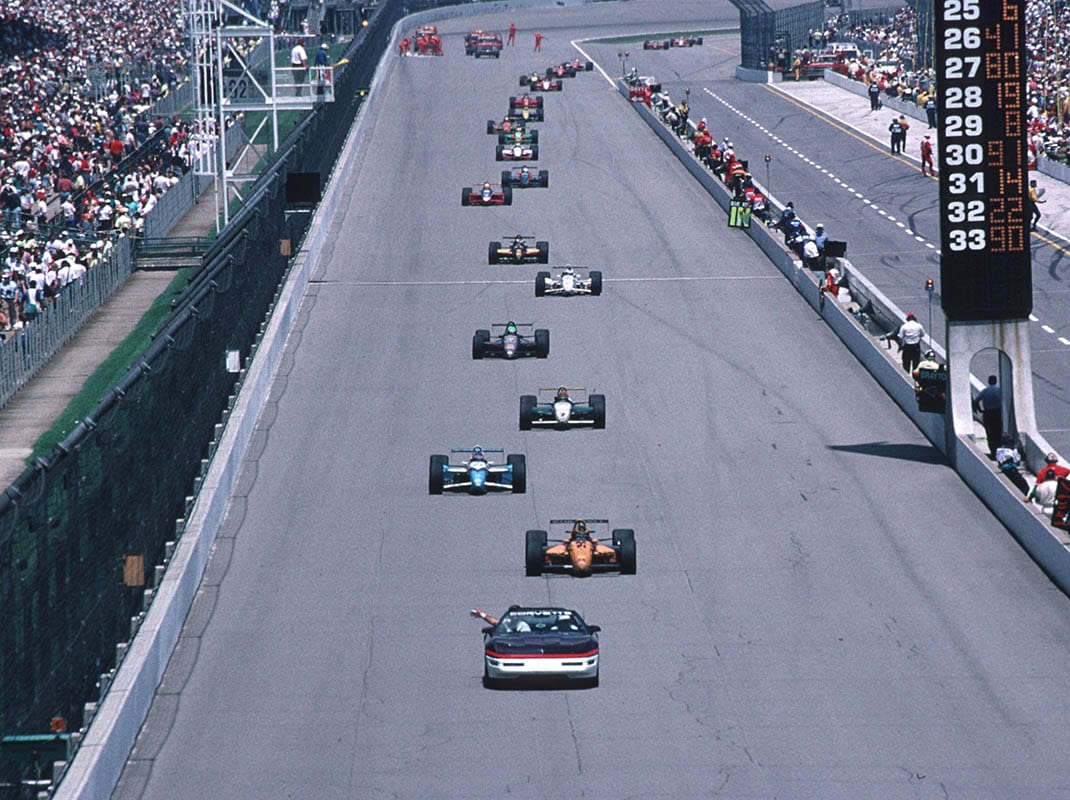Frustration and frayed nerves prevailed. Fittipaldi, reportedly, blew up on the radio after the wave off and continued his tirade back in the garage.
In cars similar to those that Rahal’s team had qualified easily, Fittipaldi and Unser struggled to find speed on Bump Day. Forty-five minutes before qualifying ended, Fittipaldi slipped into the field, but Penske’s hopes for at least one of his cars starting the 79th 500 ended with a last-minute run by Stefan Johansson that pushed Fittipaldi out.
It was as historic as it was stunning.
“I was devastated and heartbroken,” lamented Unser. “To miss Indy was beyond my wildest dreams. Especially with Roger Penske.”
For the first time since 1963, an Unser wasn’t in the 500. For the first time in 500 history, a defending winner failed to qualify the year following his victory. And for the first time in 27 years, racing’s gold standard team missed the world’s most important race.
In the face of the month’s electrified drama, many expected the race to be anticlimactic. It proved anything but.
The green flag had barely waved before a horrendous crash unfolded. Short-track hero Stan Fox lost control in turn one, collected Eddie Cheever and pounded the concrete wall with tremendous force. Fox’s car disintegrated around him.
Fox suffered multiple broken bones, but a severe head injury created the most destruction. Brain damage effectively ended his spectacular career.
Multiple yellow flags slowed the race and a record number of penalties marred it. Chief Steward Tom Binford, who later retired to lead the IRL, called it the most unpleasant race he’d officiated.
There were pit-lane speeding violations, cars ran over pit equipment and drivers ignored yellow flags. The most significant penalty occurred on lap 37. Jacques Villeneuve passed the pace car and officials assessed a two-lap penalty.
Regardless of the penalty’s validity, Villeneuve put his head down and moved relentlessly through the field, twice. Aided by opportune caution flags and heady pit work, he led at lap 157.
The quickest car on the track, however, was Goodyear. He’d moved to third behind Villeneuve and Scott Pruett and as the laps wound down, those three raced less than a second apart.
Final pit stops shuffled the leaders, putting Goodyear and Pruett ahead of Villeneuve. Suddenly, on lap 185, Pruett spun, setting up the most controversial finish in speedway history.
As the field accelerated out of turn four for the restart, Goodyear blew past the pace car. Goodyear had lost the 1992 500 to Unser Jr. by only .042 seconds. He was determined that wouldn’t happen again.
Goaded by Villeneuve, who’d been poking his car’s nose alongside Goodyear throughout the yellow flag, Goodyear took off. He thought the green light had flashed on. It hadn’t.
Villeneuve jumped to follow but believing they’d penalize Goodyear as they had him, braked hard and stayed behind the pace car.

Goodyear was far in front and roared away. Binford ordered him black flagged for a stop-and-go penalty. Believing he’d be vindicated later, Goodyear ignored it twice.
On lap 195, USAC stopped scoring him and Villeneuve took the checkered flag for the victory.
Heartbroken and disconsolate, Goodyear’s tears flowed readily. A sad situation, sadder because it’d been completely unnecessary. Villeneuve admitted he didn’t have enough to pass Goodyear.
Binford later told Goodyear later, “You should’ve come in. You would’ve finished fifth or sixth.”
“That’s not what I’m here for,” responded Goodyear.
It was a pivotal 500.
Because the IRL guaranteed 25 starting spots for IRL teams in 1996, it was five years before a CART team again participated in the 500. The split neutered America’s premier form of auto racing.
Unser Jr., who once said, “You just don’t know what Indy means …” didn’t get back to his beloved 500 until 1998.
Villeneuve won the 1995 CART championship and then followed his late father, Gilles, into Formula One. Driving for the Williams team, he became world champion in 1997. He dedicated the championship to his father who’d died racing in 1982.
Villeneuve said of his 500 victory, “It’s the greatest race in the world. Everybody wants to win it. If you have the choice of winning one race in your life, make sure it’s the Indianapolis 500.”
Scott Goodyear never again came close to that choice.
